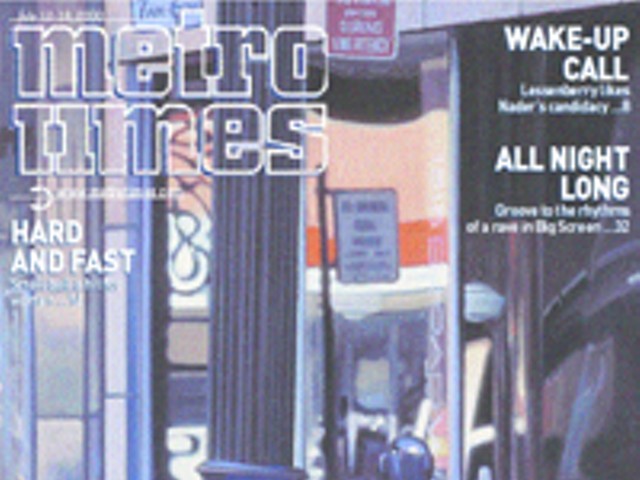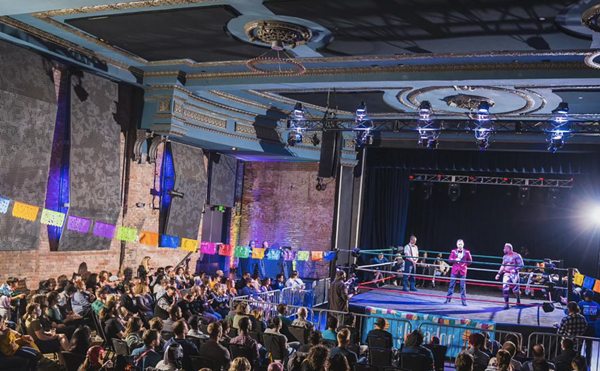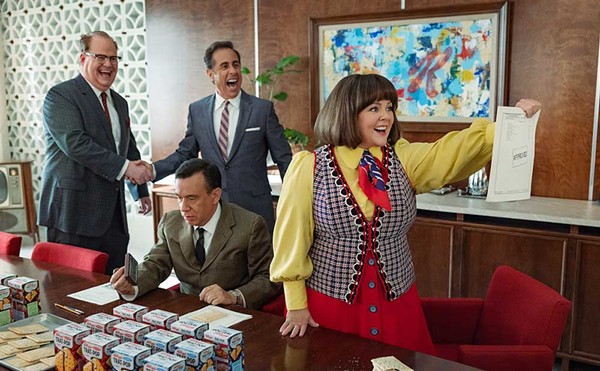"Youth culture based around music," is how Greg Harrison describes the rave scene which is the subject of his debut film, Groove. But Harrison is well aware of the pitfalls of trying to document a scene – any scene – in a feature film, the first of which is that by the time the movie reaches theaters, its moment has come and gone.
"Some people have argued that it’s dated," Harrison says, "because the kind of warehouse party it depicts is a party of the early-to-mid-’90s. I think the film expresses more what’s universal about the scene and the experience of the music on the dance floor."
A good rave, he asserts, is still primarily an underground experience, even if in the last decade the sounds which drive the scene have surfaced sufficiently to merit major events such as the Detroit Electronic Music Festival last May.
"The vibe of the party, if you will, or the intent of the party best exists underground," Harrison says of his choice to set Groove in a warehouse. "If you’re talking about bringing the spirit of the party above ground, it’s difficult or near-impossible to do because it’s at odds with mainstream consumer culture. A real underground party is based on creative expression, experimentation, acceptance, openness, and that creates a different environment."
It was Harrison’s own experiences at raves which served as the genesis of Groove, and he’s found a welcome degree of acceptance for the film from electronica aficionados who’ve seen it.
"The large percentage of people in the scene," that Harrison has talked to, "do feel that it’s one of the first films which attempts to treat the rave scene respectfully and authentically, and tried to express elements of the subculture and of the community around the music."
But will Groove only end up preaching to the already converted, turning off audiences unfamiliar (or uninterested) in the music and the culture that blossomed around it?
"It was tricky to ride that line," says Harrison, "for it to work for somebody in the scene and work for someone not in the scene. That’s a pretty tall order. I tried to make the film as accessible as it can be and still be authentic."
"Some people may experience (Groove) as a vicarious thrill," he continues, "a travelogue going into a world that they know nothing about. It’s really important to make it authentic and engrossing in the level of detail for people outside (as well as inside) the scene."
The 31-year-old Sterling Heights native and Michigan State grad now resides in San Francisco, and he made the film specific to that scene. In addition to bringing in a number of Bay Area rave enthusiasts as dancers, Harrison also utilized local talent such as DJ Polywog (a distinctive presence with her Medusa hair) alongside internationally recognized mixmasters such as John Digweed.
"Some of the rave parties that go on in San Francisco," he says, "echo the ‘60s subculture that was there. I tried to be as specific to the city as I could, not only visually but in the feel of the film. The notion of PLUR – which is peace, love, unity, respect – that’s an aspect of the underground scene that not everybody talks about. A lot of the scene is based on this ethos of PLUR, which sounds very ‘60s-ish. You can draw a lot of parallels: a countercultural movement, a subculture, rallying around music, and to some degrees, political."
But in our strangely conservative times, when all taboos are aired but few people actually discuss them beyond dogmatic or simplistic pronouncements, Greg Harrison found his refusal to tone down drug use or "infuse it with a moral consequence" became a hurdle to receiving financing from traditional independent film sources. (Groove was eventually funded by the newly flush young creative capitalists of nearby Silicon Valley.)
"I always felt if I were going to make a film about raves," he explains, "I wanted to present and not judge, and present truthfully as many different sides of the experience as I could. The guiding principle for me was to ask, ‘Why?’ Why people are drawn to the experience, whether they’re taking Ecstasy or not. The drug use happens – it’s a fact. Sometimes people use Ecstasy and they have something that they consider an amazing experience. Now, whether it’s ultimately destructive or false, that’s for each person to judge.
"For it to stay alive for 10 years all over the world with millions of people involved," he continues, "there must be something basically compelling about the experience. That’s what drove me as the writer-director. I just thought that, at best, the mainstream media was only reporting part of the story and, at worst, it was outright vilifying a culture that they didn’t know anything about."
What was most important to Greg Harrison was to capture that insular, comforting and often transformative vibe of a groove collective inspired not just by music but by being with like-minded individuals.
"It’s happy to be its own world, really," he says, "with its own set of rules. It revels in its subculture identity: a bunch of people who like to define their experience within a community that’s outside of the mainstream."
Serena Donadoni writes about film and visual culture for Metro Times. E-mail [email protected]




